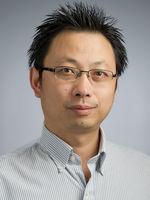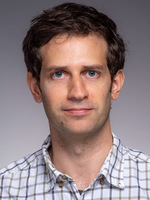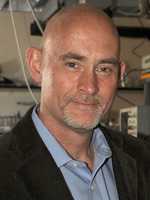2019 NDnano Seed Grants
Seven faculty members from the University of Notre Dame’s College of Engineering and College of Science were awarded three grants through the Notre Dame Nanoscience and Technology (NDnano) 2019 Seed Grant Program.
"We are proud to be able to support new and exciting interdisciplinary research programs from NDnano faculty,” said Derek Lake, associate director of NDnano. “The selected projects could have broad implications as they highlight just a glimpse of what Notre Dame has to offer to the fields of nanoscience and nanotechnology.”
The 2019 Seed Grant recipients are:


Principal investigators: Jennifer Schaefer, Department of Chemical and Biomolecular Engineering, and Haifeng Gao, Department of Chemistry and Biochemistry.
Project: "Developing a new polymer platform for alkaline fuel cell membranes"
Abstract: The goal of this cross-college research is to investigate a new polymer platform toward developing a low-cost, high-performance anion exchange membrane (AEM) for alkaline fuel cells. Recently, the Gao group developed a facile Friedel-Crafts (F-C) hydroxyalkylation polymerization method that synthesizes high-molecular-weight polymer with rigid backbone in one pot using inexpensive commercial monomers. An intriguing feature of this polymerization method is the option to freely incorporate both charged groups and hydrophobic groups as substituents along the polymer backbone, which is expected to be critical to achieve optimized balance between ion conductivity, water swellability, and mechanical integrity when applying the polymers as AEM materials for alkaline fuel cells. We hypothesize that this tunability, coupled with the low material cost and high chemical stability of polymer backbone, will make this material an intriguing platform for AEM development.


Principal investigators: David Burghoff, Department of Electrical Engineering, Badih Assaf, Department of Physics, and Xinyu Liu, Department of Physics.
Project: "Topological materials for THz devices"
Abstract: In this program, the researchers will use their expertise to develop topological materials as a new platform for THz optoelectronics and band structure engineering. The team will design new heterostructures based on a recently-identified topological crystalline insulator (TCI), using molecular beam epitaxy (MBE) to grow these materials and magnetooptical measurements to characterize their properties. They will develop an optical pump terahertz probe (OPTP) system to study the physics of their non-equilibrium dynamics, allowing researchers to directly optically measure the bandgaps of hybridized TI band structures for the first time. Finally, they will use this new wealth of information to design high-speed THz direct detectors, an innovation that is desperately needed for THz applications but has remained elusive. Such detectors are urgently needed for systems such as compact greenhouse gas detection, in situ solar cell growth monitoring, and explosive screening.


Principal investigators: Svetlana Neretina, Department of Aerospace and Mechanical Engineering, and Greg Hartland, Department of Chemistry and Biochemistry.
Project: "Harvesting hot electrons for plasmonic photochemistry and photovoltaics"
Abstract: With the understanding that solar-powered societies provide the opportunity for global sustainability comes the pressing need for revolutionary technologies that harness the energy of the sun. When reduced to the nanoscale, certain metals have the extraordinary property of being able to focus light energy into small volumes and subsequently impart this energy to the electrons within the metal. These so-called “hot electrons” are ideal for catalyzing chemical reactions and for energy conversion within photovoltaics. The goal of this research is to discover how to effectively utilize these short-lived hot electrons before their energy is transformed into heat. To achieve this outcome, nanofabrication techniques will be used to generate well-defined and well-characterized nanoscale architectures whose photochemical and photophysical properties will be examined using ultrafast spectroscopic techniques. The knowledge gained will advance a broader vision that sees the sun’s energy converted, not only into electricity, but used in chemical processes that generate fuels through water splitting and converts greenhouse gases into valuable products.